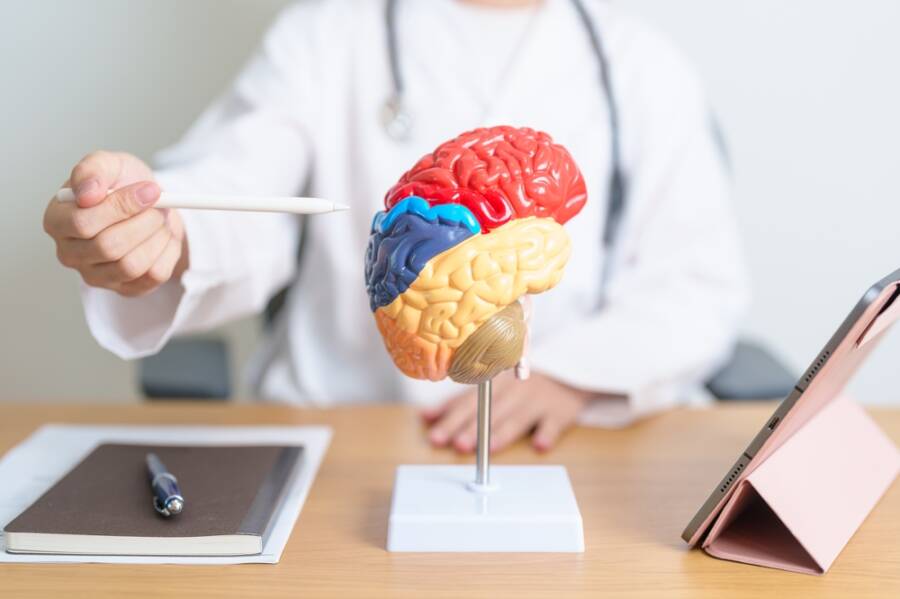CBT, short for cognitive behavioral therapy, is a type of psychotherapeutic treatment that’s meant to help people learn how to change their destructive or disturbing thought patterns that might negatively influence their behavior and emotions.
Cognitive behavioral therapy primarily focuses on changing the instant negative thoughts that might contribute to and worsen our emotional state. These negative thoughts are seen as fully detrimental to our mood.
But this cognitive behavioral therapy enhances the chances of finding, challenging, and replacing these faulty thoughts with something more realistic and objective. If you’re interested to know more, here are the main types of cognitive behavioral therapy:
CBT has a variety of techniques and approaches that directly address the thoughts, emotions, and behaviors of one’s mind. These usually range from structured psychotherapies to self-help practices. Some might have a more specific therapeutic approach, such as:

Cognitive therapy
This type of therapy is focused on identifying and replacing inaccurate and distorted thought patterns, but also emotional responses, and behaviors.
Dialectical behavior therapy (DBT)
This therapy addresses destructive and disturbing thoughts and behaviors but also incorporates various treatment strategies, like emotional regulation and mindfulness.
Multimodal therapy
Multimodal therapy is based on the idea that all the psychological issues of a patient must be treated by simply addressing seven modalities: behavior, affect, sensation, imagery, cognition, interpersonal factors, and dr*g/biological consideration.
Rational emotive behavior therapy (REBT)
The last one implies identifying irrational beliefs, actively challenging all of these beliefs, and ultimately learning to spot and change these patterns.
Cognitive behavioral therapy techniques
CBT is all about identifying thought patterns, but also so much more. It required a wide range of strategies that are meant to help people overcome all the patterns in question. Here are only a few examples:
Identifying negative thoughts
It’s highly important to understand what thoughts, feelings, and situations are doing to maladaptive behaviors. The process might not be the easiest, especially for people who simply struggle with introspection.
However, taking the time to spot these thoughts might also lead to self-discovery and provide the needed insights that are crucial to the treatment process.
Practicing new skills
When it comes to cognitive behavioral therapy, people learn new skills that can be easily applied in real-world situations. For instance, someone who struggles with a substance use disorder might practice brand new coping skills, and rehearse new ways to avoid or deal with triggering social situations.
Goal-setting
Goal setting is a very important aspect in recovery from mental illness, as it helps make changes that will later improve your health AND life. During CBD, a therapist will help you build and strengthen your ability to set goals.

Problem-solving
Learning problem-solving skills during CBD might help you learn how to identify and even solve problems that might arise from different life stressors. It will also help reduce the negative impact of different psychological and physical illnesses. In CBT, here’s how problem-solving works:
- Identify the problem
- Generate an entire list of potential solutions
- Evaluate all the strengths and weaknesses of any potential solution
- Settle for a solution that you will later implement
- Implement the solution
Self-monitoring
Also called diary work, self-monitoring is a highly important cognitive behavioral therapy technique. It revolves around tracking behaviors, and symptoms, but also experiences over time, and sharing them with your therapist.
Self-monitoring provides your therapist with the needed information to decide on the best treatment.
For instance, people who struggle with eating disorders might benefit from this approach, as self-monitoring is all about keeping track of eating habits but also writing down thoughts and feelings that triggered the hunger.
What CBT might work for
Cognitive behavioral therapy could be used as a short-term treatment to help individuals learn how to focus on their present thoughts and beliefs. It works for a wide range of conditions, such as:
- Addiction
- Anger issue
- Anxiety
- Bipolar disorder
- Depression
- Eating disorder
- Panic attacks
- Personality disorders
- Phobias
Besides all of the above, it has been discovered that CBT also helps people who suffer from:
- Chronic pain
- Divorce/break-ups
- Grief and loss
- Insomnia
- Low self-esteem
- Relationship problems
- Stress management
The benefits of Cognitive Behavioral Therapy
The underlying concept behind this therapy is that our thoughts and feelings have a major influence on our behavior. For instance, someone who spends a lot of time thinking about plane crashes, accidents, and any other air disasters might end up avoiding air travel.
The whole idea of cognitive behavioral therapy is to teach other people how to accept the fact that they can’t control every aspect of the world around them, but they can take control of how they see the world and deal with things in their environment.
CBT provides the following benefits:
- You will develop healthier thought patterns, as you become aware of the negative and oftentimes unrealistic thoughts that do nothing but dampen your feelings and moods
- It’s a highly effective short-term treatment, as the improvements appear between five to 20 sessions.
- It’s also effective for a wide variety of maladaptive behaviors
- It’s way more affordable than other types of therapy
- It’s effective whether the therapy takes place online or face-to-face
- It can be used for those who don’t need psychotropic medication

CBT Effectiveness
CBT was initiated in the 1960s, and it was originally the idea of Aaron Beck, a well-known psychiatrist, who noted that some types of thinking contributed to emotional issues.
Beck called these “automatic negative thoughts”, and proceeded to develop the process of cognitive therapy. As earlier behavior therapies were mainly focused on associations, reinforcements, and punishments to modify the current behavior, this cognitive approach tried to address how thoughts and feelings might affect behaviors.
Nowadays, cognitive behavioral therapy is by far one of the most well-studied forms of treatment. It has been proven to be extremely effective in the treatment of different mental conditions, such as anxiety, depression, eating disorders, insomnia, obsessive-compulsive disorder, panic disorder, post-traumatic stress disorder, but also substance use disorder.
In fact, research shows that cognitive behavioral therapy is the number one evidence-based treatment for eating disorders. CBT has been incredibly helpful for treating insomnia, too, but also for those patients who suffer from a medical condition that interferes with their sleep, such as depression.
A 2018 meta-analysis of over 41 studies discovered that CBT helped improve difficult symptoms in people with anxiety and other anxiety-related disorders, such as obsessive-compulsive disorder, but also post-traumatic stress disorder.
Cognitive behavioral therapy has a higher level of empirical support for treating substance use disorders, but also for helping people with disorders improve their self-control abilities, avoid triggers, and develop coping mechanisms for daily stressors.
CBT is definitely one of the most well-known and researched types of therapy, mostly because its treatment is entirely focused on a couple of specific goals, and the results can be measured easily.
If you want to try this type of therapy, prepare to answer a couple of key questions about what convinced you to go to therapy, your symptoms, and your history, such as your childhood, education, career, relationships, and current living situation.
Once the therapist has a more comprehensive idea of who you are and the challenges you face, they can guide you on how to increase your awareness of your thoughts and beliefs.
If you enjoyed reading this article, you might also want to try: 7 Effective Ways to Reduce Anxiety















One Response
My son has cognitive problems I know her like morning for motion about this.